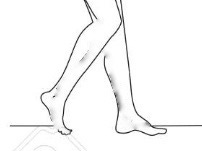Lub-DUP Lub-DUP…
Our regular, measured heartbeat is the basis of our sense of rhythm.
This rhythm (di-DUM di-DUM, symbolised as ⏑ — ⏑ — ) was heard to be that of a steady walk, with alternate feet falling on the heavier beat. It was given the name iambos by ancient Greeks, a word related to ‘amble’ (and Latin ambulo). The philosopher Aristotle said that iambic rhythm was most like normal speech.
Some scholars took just half this rhythmical phrase ⏑ — (short-long) and called it an ‘iamb’. In English poetry, five iambs are said to be the underlying pentiambic (or ‘iambic pentameter’) rhythm of the sonnet:
1 2 3 4 5
⏑ —| ⏑ — | ⏑ — | ⏑ — | ⏑ —
Shall I compare thee to a summer’s day?
English doesn’t sound wholly natural in this rhythm: ‘thee’ should really take longer than ‘to’, for instance. But ancient Greek and Latin poets work with metre (measured syllables) rather than rhythm (accented syllables), and they strictly differentiate long and short syllables. For them, the basic iambic ‘foot’ consists of ⏑ — ⏑ — (they do not use the ‘iambic pentameter’ which would require two and a half such lengths). Sometimes the foot begins with a long beat, — — ⏑ —.
The standard rhythm of verse used in fifth-century BC Greek tragedies (and its Latin imitations such as those of Seneca in the first century AD) is the iambic trimeter, that is three lots of ⏑ — ⏑ — (confusingly, then, the classical trimeter is a slightly longer line than the English pentameter). Poets regularly split the line up into two sections, one slightly shorter than the other that breaks just before the central point (as shown here by :) of the line:
⏑ — ⏑ — | ⏑ : — ⏑ — | ⏑ — ⏑ —
In Greek iambics, every verse falls into two:
A shorter section antecedes a longer one.
There are other features (to be explained another time), but once you hear this rhythm clearly in your mind, or even better by reading it aloud, you can start to read ancient Latin and Greek poetry, such as the Latin poet Catullus’s poem 4 about the little boat, in the right rhythm:
Phaselus ille quem videtis hospites
ait fuisse navium celerrimus.
You see, my friends, that little model boat?
She claims she was the fastest of her kind!And for those who know Greek, you can read the opening lines of Oedipus Tyrannus in metre:
ὦ τέκνα, Κάδμου τοῦ πάλαι νέα τροφή, τίνας ποθ᾽ ἕδρας τάσδε μοι θοάζετε ἱκτηρίοις κλάδοισιν ἐξεστεμμένοι; O children, youngest heirs of Cadmus old, why sit you here before me in this way, with boughs of supplication in your hands?
You will observe that I’ve translated the iambic trimeters of Greek and Latin into iambic pentameters. The traditional line length in English works better.




Today I’ve leant something new😬
With the comparative use of the poetic metre and style would you say writing poetry in any of the three languages (English, Greek or Latin) was more complicated?